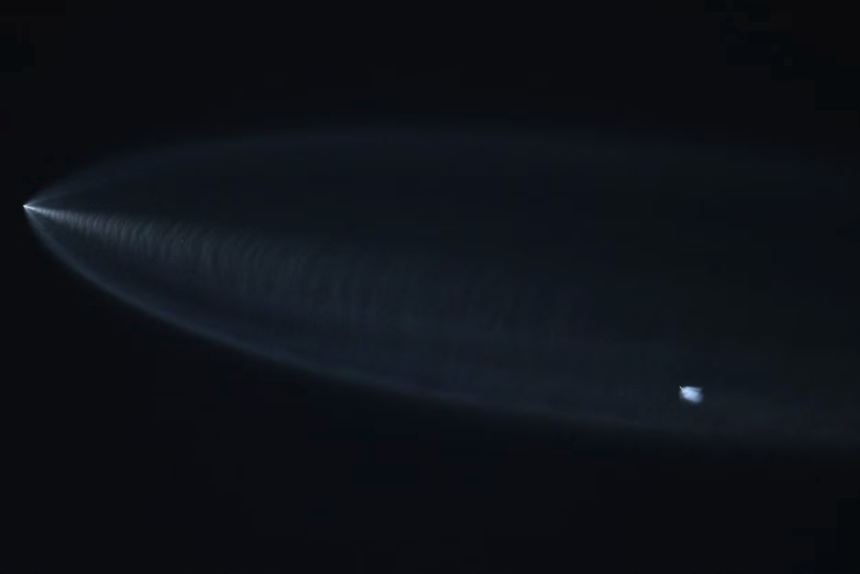An average of one to two Starlink satellites are deorbiting daily in 2025 — raising concerns over atmospheric impact and re-entry safety

Elon Musk’s Starlink satellite constellation is witnessing a surprisingly high rate of orbital decay, with one to two satellites deorbiting per day on average this year. That rate is projected to climb to around five per day as SpaceX continues launching more satellites to expand its space-internet network.
The numbers are staggering: SpaceX has launched over 6,000 operational Starlink units and has regulatory approval for up to 42,000 satellites. That means constant traffic not only into orbit — but also back out of it.
The Inevitable Descent
Starlink satellites orbit in low Earth orbit (LEO) — roughly 550 kilometers above Earth. This altitude allows for fast, low-latency internet but also exposes the satellites to atmospheric drag that slowly pulls them down.
When satellites lose altitude, they eventually re-enter the atmosphere and disintegrate, a process known as controlled deorbiting.
SpaceX says all Starlink satellites are designed to burn up completely upon re-entry, ensuring that no fragments reach the ground.
However, with more than 700 satellites expected to re-enter each year, even a 99.9% “complete burn” still translates into a measurable amount of metallic residue entering the upper atmosphere.
What Happens When Satellites Burn Up?
When a satellite re-enters Earth’s atmosphere at roughly 25,000 km/h, it undergoes extreme heating — up to 1,600°C or higher.
Aluminium, a key component in satellite frames, vaporizes into aluminium oxide particles (Al₂O₃), which can linger in the mesosphere and stratosphere.
Atmospheric scientists worry these particles may:
- Reflect sunlight, subtly affecting radiative balance and contributing to localized cooling or warming effects.
- Disrupt ozone chemistry, similar to the way certain aerosols interact with ozone molecules.
- Accumulate over time if thousands of re-entries occur annually.
A 2023 study from the University of British Columbia found that satellite re-entries could already be contributing up to 10% of all aluminium oxides detected in high-altitude atmospheric samples — a figure projected to rise sharply by 2030.
Space Debris and “Potshots from Above”
Not all re-entries are perfectly controlled.
Dr. Jonathan McDowell, astrophysicist at the Harvard–Smithsonian Center for Astrophysics, noted that several times each year, “uncontrolled debris re-entries occur — essentially potshots at people on Earth.”
While Starlink’s design reduces this risk dramatically, other satellites and rocket components are less predictable.
SpaceX’s rapid scaling of launches and re-entries amplifies traffic management challenges, as debris from other sources may interact with Starlink units or their remnants.
The Scale of the Megaconstellation Era
The U.S. Space Command currently tracks over 20,000 active and defunct satellites, with SpaceX accounting for nearly half of all operational spacecraft in orbit.
Competitors like Amazon’s Project Kuiper and China’s planned GW constellation are set to join the fray, meaning Earth’s orbital population could quadruple in the next decade.
This influx raises three critical issues:
- Collision risk — More satellites mean a higher chance of in-orbit collisions.
- Re-entry frequency — More satellites eventually burning up.
- Environmental oversight — Currently, there’s no global regulation governing atmospheric emissions from satellite re-entry.
 Calls for Regulation and Research
Calls for Regulation and Research
Experts are urging governments and space agencies to treat re-entry emissions as a form of pollution — requiring reporting, modeling, and eventual mitigation strategies.
Dr. Alice Gorman, space archaeologist at Flinders University, argues that “space sustainability must extend beyond orbit — to what happens when objects come home.”
Potential solutions include:
- Developing biodegradable or non-metallic satellite materials.
- Coordinating international deorbiting schedules to limit simultaneous re-entries.
- Expanding upper-atmosphere monitoring to quantify long-term changes.
SpaceX’s Position
SpaceX maintains that Starlink’s re-entry system is safe and environmentally responsible.
The company says each unit is built to fully vaporize, leaving “no debris impact on the ground or atmosphere beyond trace amounts of natural byproducts.”
In a statement earlier this year, SpaceX said:
“Starlink satellites are designed for complete atmospheric burnup and minimal environmental impact. We continuously review re-entry data and collaborate with scientific institutions to ensure transparency.”
Still, independent researchers argue that even if each re-entry is harmless on its own, the cumulative effect of thousands could become an environmental variable we don’t yet fully understand.
The Future of the Falling Sky
The sight of satellites streaking across the night sky has become familiar — but those same streaks are increasingly appearing on the way down.
In the coming years, the conversation around the “space economy” will likely evolve from launch frequency to re-entry responsibility.
As Dr. McDowell puts it:
“The Starlink re-entries are not a crisis — yet. But they are a preview of what’s coming when tens of thousands of satellites start aging out of service. The sky is getting busy in both directions.”




